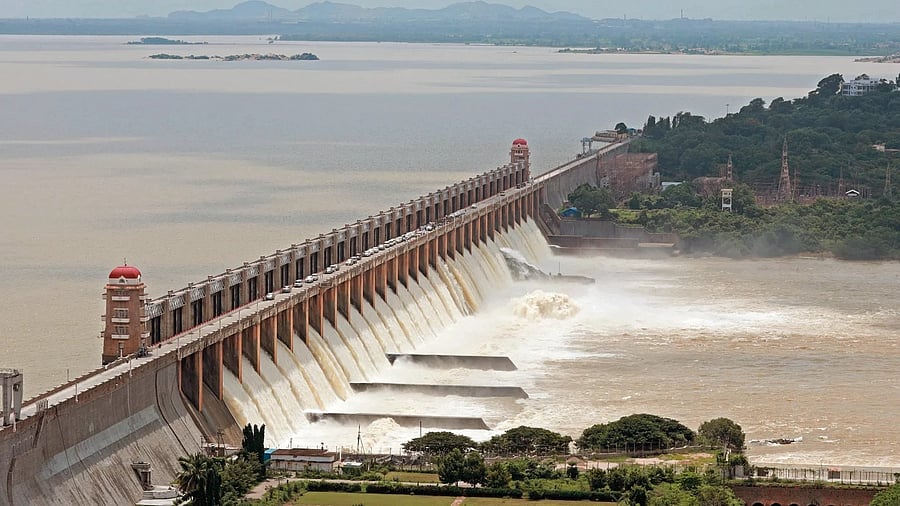
Credit: DH photo
Of the 74 reservoirs and dams in Karnataka, the water resources department has studied the silt accumulation of only 14 over the last decade and has found increasing sedimentation in them, resulting in 3% to 28% loss of overall storage.
Officials at Karnataka Engineering Research Station (KERS), the department’s nodal wing studying silt accumulation, told DH that a proposal to assess silt accumulation in 48 reservoirs during the next cycle of the National Hydrology Project (NHP) was sent nearly seven months ago, and so far, the state hasn’t received any response from the Centre.
The exercise is expected to cost Rs 7.45 crore. Based on this study, the government prepared action plans to manage the reservoir. The study requires three years for completion.
Silt not only reduces the dam’s capacity but also damages it and leads to floods. Accumulation of 32 tmcft of silt at the Tungabhadra reservoir has forced the state government to consider balancing the reservoir at Navali.
The sheer quantity and cost involved have thwarted several attempts by farmers and the government to remove the silt.
“Every year, nearly 0.45 tmcft of silt gets accumulated in the TB dam. The periphery of the reservoir has stagnant silt, which gets flushed downstream,” said Hanumangouda Belagurki, former chairman of the Agriculture Pricing Commission.
He blamed poor maintenance for the breaking away of its crest gate.
“Had we implemented catchment area treatment plans and de-silted reservoirs on time, there would have been no need to build other dams,” he said.
A member of the Upper Krishna Project Land Losers’ Agitation Committee said increasing the Almatti reservoir’s height could have been avoided had officials properly managed the flood inflow and outflow.
“The quantity of silt at Almatti and Narayanpur is too high to be cleared,” he said.
The government dropped a plan to desilt the Harangi dam (0.83 tmcft of silt) as it was not economically feasible.
KERS director K G Mahesh said most of the Krishna basin reservoirs are getting silted due to black-cotton soil and floods in Maharashtra.